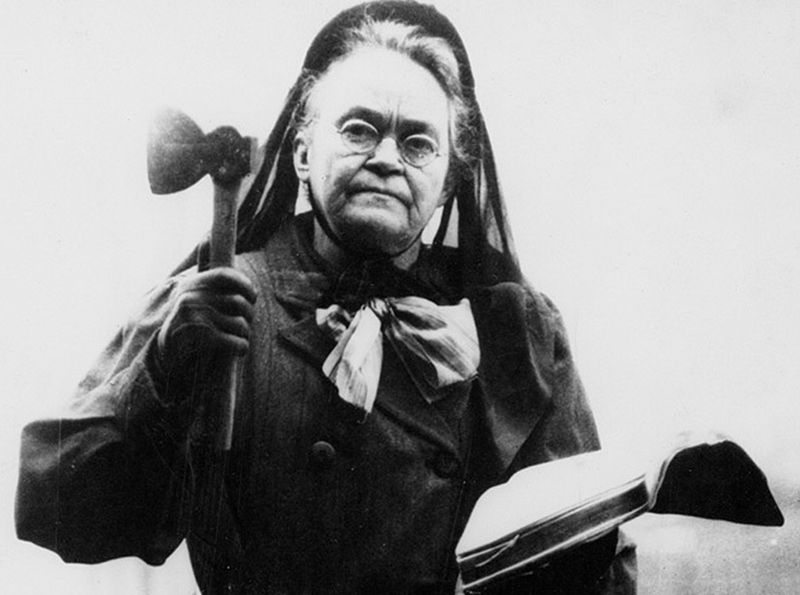A Chronology of Woman Suffrage Organizations
Page Content

Anti-alcohol crusader Carrie A. Nation personified the efforts of the Women's Christian Temperance Union in the late 1800s and early 1900s. Nation's colorful style of direct action grew into the legend of her using a hatchet to wreck saloons. Here she is shown in 1910 with her trademark hatchet and bible. (Courtesy of Wikimedia Commons)
Anti-alcohol crusader Carrie A. Nation personified the efforts of the Women's Christian Temperance Union in the late 1800s and early 1900s. Nation's colorful style of direct action grew into the legend of her using a hatchet to wreck saloons. Here she is shown in 1910 with her trademark hatchet and bible. (Courtesy of Wikimedia Commons) A welter of woman suffrage clubs, associations and other organizations waxed, waned, split, and combined over the decades from the late 1800s to the early 1900s in the United States. Ideological, strategic, and tactical differences abounded.
Strategically, some proponents, such as members of the Women's Christian Temperance Union, had their origins in the temperance and prohibition movements. They saw women voters as a big advantage in advancing their primary cause centered on limiting the negative effects of
alcohol on society. Others wanted the question of woman suffrage to be separate from individual
social issues and saw connections to temperance and prohibition as damaging distractions.
Tactics varied greatly too and caused rifts in the movement. For example, relations between Western suffragists, including Abigail Scott Duniway, and their eastern counterparts, such as Susan B. Anthony and Anna Howard Shaw, were often strained by different approaches to passing suffrage legislation—Duniway preferring the “still hunt” approach of restrained lobbying to win over men while Anthony and Shaw advocated for a much more aggressive public style of campaign.
Not surprisingly, these sorts of differences manifested themselves in a
variety of organizations and associations, some of which continue to this day. This timeline shows some of the major woman suffrage organizations and how they evolved over time.